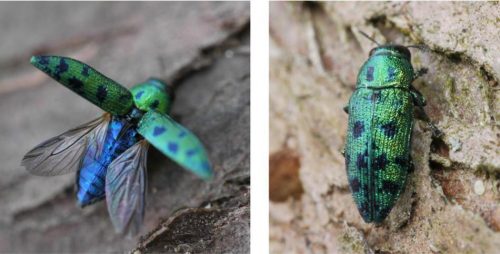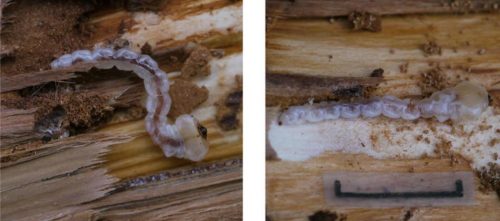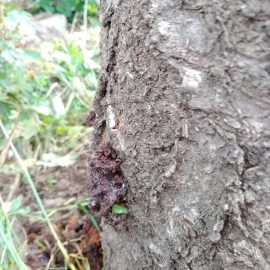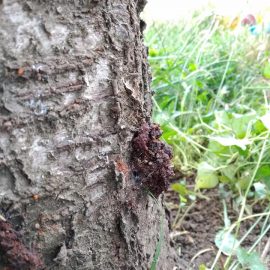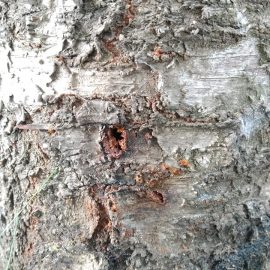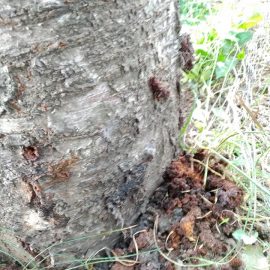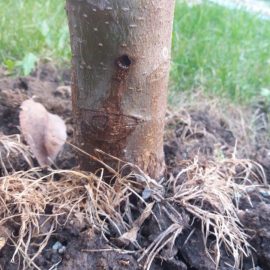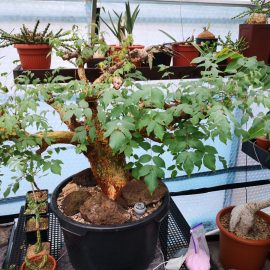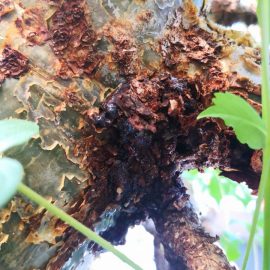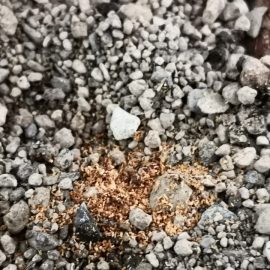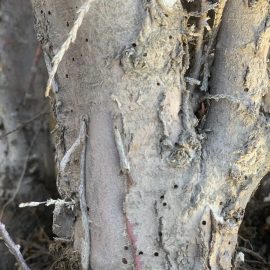Cypress Jewel Beetle (Ovalisia festiva) – pest management
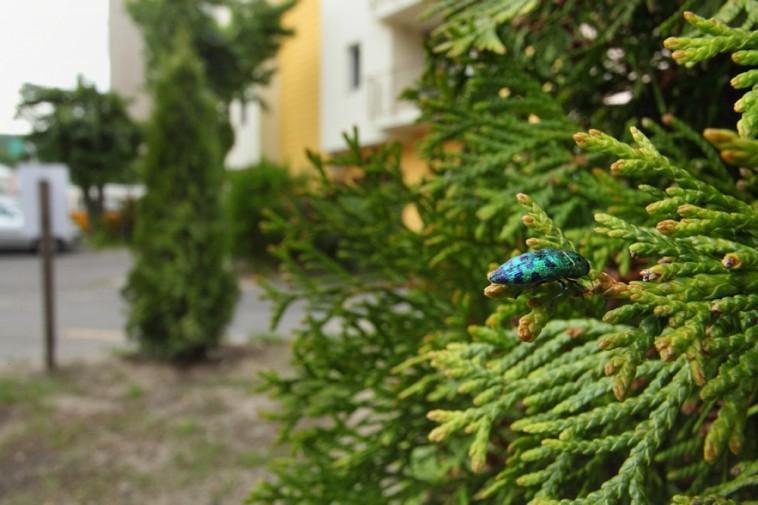
The cypress jewel beetle, Ovalisia festiva is a pest that attacks especially the species of Cupressaceae, namely thuja, cypress, and juniper.
It is more common in Central and Eastern Europe, where it was rarely encountered or completely absent in the past. In the Mediterranean area, Ovalisia festiva has become a dangerous pest for Cupressaceae.
Origin
The insects have been identified in France, Portugal, Spain, Italy, Greece, Slovenia, Morocco, Algeria, and Tunisia. They have rarely been found in Austria, southern Germany, Bulgaria, and Hungary.
The cypress jewel beetle is a beetle of the order Polyphaga, family Buprestidae. The larvae of this family are known as flat-headed drillers. The Buprestidae family includes about 15,000 species of beetles and 450 genera.
Description
The shape is generally cylindrical or elongated oval, with lengths between 3 and 80 mm. The general color is metallic green with black spots. Adults are active during the hottest hours of the day.
Immediately after mating, the females lay their eggs in the bark of the trunk of the tree or branches. Females use their ovipositors (the egg-laying organ) to make a short incision in the bark of the tree and lay their eggs between the bark and the xylem.
The larvae, which will hatch over the winter, drill the galleries that cause the death of the branches or even the death of the whole plant. The larvae are about 15-20 mm long.
Adults can be spotted from May to September, while larvae and pupae are present all year round. They grow on stressed, injured trees, freshly fallen branches, in forests, or on remains left behind over from logging. Their flight takes place from May to July. The whole life cycle lasts between one and three years.
Heliophiles and thermophiles: these beetles are active in the sun during hot days.
An adult beetle emerges from the pupa in early summer, around the time the linden trees begin to bloom, closing the cycle. The attack of the beetle causes the browning and death of the branches or of the whole plant. Under the bark are galleries filled with sawdust, dug by the larvae. Attacks can vary from tree to tree.
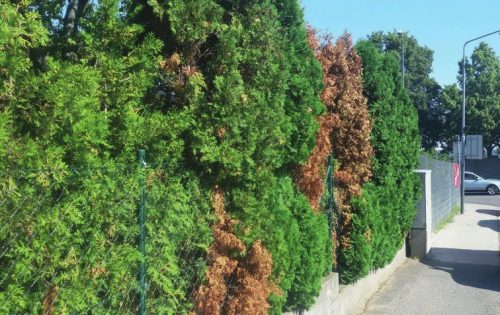
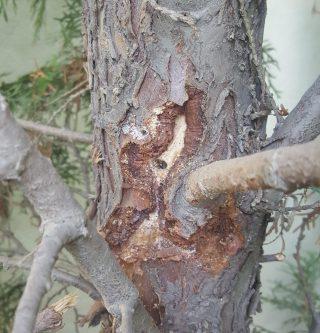
Damage
External signs of infestation may include: cracking and peeling of the bark, dust on the trunk or on the ground, trees whose color has changed, destruction of the crown due to the damage to the leaves of the tree. The larvae prefer smaller branches or stems with a diameter of up to 2-10 cm. Damages to the bark reduce the mechanical integrity of the trunk and/or portions of the trunk. At the same time, the water flow is disturbed. The first symptom of this condition is ischemia which leads to dry leaves. When a branch or stem is heavily infested with larvae, it can dry out completely. 2-4 mm holes can be observed on the infected branches.
Prevention and control measures
Strongly infested branches have to be cut down and must be burned to reduce future generations of pests.
For control, specific insecticides must be applied during the flight and mating periods of the adults (May-August).
Recommended products
-
You can find products on a different store
Change Store -
You can find products on a different store
Change Store -
You can find products on a different store
Change Store -
You can find products on a different store
Change Store -
You can find products on a different store
Change Store -
You can find products on a different store
Change Store -
You can find products on a different store
Change Store -
You can find products on a different store
Change Store -
You can find products on a different store
Change Store -
You can find products on a different store
Change Store -
You can find products on a different store
Change Store -
You can find products on a different store
Change Store -
You can find products on a different store
Change Store -
You can find products on a different store
Change Store -
You can find products on a different store
Change Store -
You can find products on a different store
Change Store -
You can find products on a different store
Change Store -
You can find products on a different store
Change Store -
You can find products on a different store
Change Store -
You can find products on a different store
Change Store -
You can find products on a different store
Change Store -
You can find products on a different store
Change Store -
You can find products on a different store
Change Store -
You can find products on a different store
Change Store
To help the plants cope with the stress of the attack, it is recommended to apply specific products.
Recommended products
-
You can find products on a different store
Change Store -
You can find products on a different store
Change Store -
You can find products on a different store
Change Store -
You can find products on a different store
Change Store -
You can find products on a different store
Change Store -
You can find products on a different store
Change Store -
You can find products on a different store
Change Store -
You can find products on a different store
Change Store -
You can find products on a different store
Change Store -
You can find products on a different store
Change Store -
You can find products on a different store
Change Store -
You can find products on a different store
Change Store -
You can find products on a different store
Change Store -
You can find products on a different store
Change Store -
You can find products on a different store
Change Store -
You can find products on a different store
Change Store -
You can find products on a different store
Change Store -
You can find products on a different store
Change Store -
You can find products on a different store
Change Store -
You can find products on a different store
Change Store -
You can find products on a different store
Change Store -
You can find products on a different store
Change Store -
You can find products on a different store
Change Store -
You can find products on a different store
Change Store














































































































































































































































































































































































































































